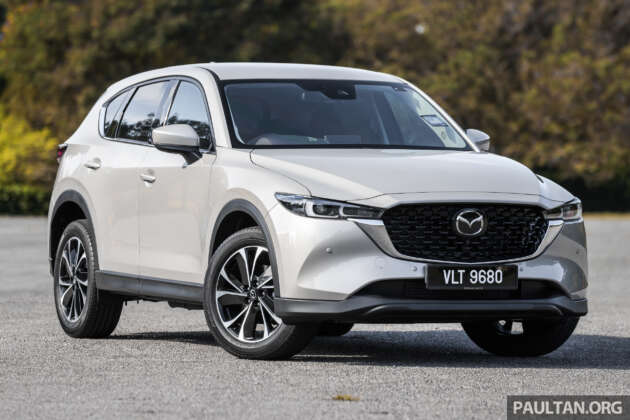While the ND Mazda MX-5 is soldiering on, still fresh from a facelift that was just launched in Malaysia, there’s no escaping the fact that the evergreen roadster is now 11 years old. It is thus ripe for a replacement, and there’s been speculation that the forthcoming fifth-generation model will be the first in the bloodline to feature some sort of electrification.
Hiroshima has definitively quashed those rumours – according to Road and Track, the sports car will not only continue to be purely petrol-powered, but it will also stay naturally aspirated and come with a manual option. That’s according to the publication’s interview with senior Mazda officials, who confirmed that the new car is currently in the planning stages.
Mazda is apparently cognisant that the continued success of the MX-5 is dependent on it sticking to the lightweight purist recipe that has served it well for 36 years, having sold over 1.2 million units since the car’s debut in 1989.
“What defines the MX-5?” asked chief technical officer Ryuichi Umeshita. “I would say the most important thing is that it is lightweight, and that the second most important thing is that it is lightweight. That is the key — whatever the future MX-5 is, it must be very light.”
The company has long resisted the urge to make the car bigger, heavier and more complicated, defying the industry trend. Design general manager Masashi Nakayama, who was the lead designer for the ND, said as much to hilarious effect.
“When I started designing this fourth generation, there was a request from the United States to make the car bigger, and to increase the power of the vehicle,” he remarked. “I said, “Do you really want a Harley-Davidson?””
Nakayama continued, laying down the blueprint for a next-generation MX-5. “We tend to select the ones whose parts are less expensive, lighter and smaller. By doing so, we can prevent a car from being too big. When we consider the next-generation MX-5, we are considering making it less than one tonne in weight, and less than four metres in length.”
That’s about the size and weight of the current car, which measures 3,915 mm long and, in its lightest spec with a 1.5 litre engine and a manual gearbox, weighs just 1,010 kg. Getting the weight under a tonne would be a massive challenge considering ever tougher safety regulations, but it will at the very least not need more power, said Umeshita.
“The current power-to-weight ratio is enough. We don’t think we need more power for the car, because we can fully utilize and enjoy the capability and capacity of the engine already…so my answer is that we are not planning to add more power to that car. Basically, this is the concept that keeps the car very unique.”
In terms of what will actually power the car, the next MX-5 is slated to utilise the Skyactiv-Z family of engines, which will make its debut in the third-gen CX-5 by the end of 2027. These mills will make use of ultra-precise engine management to achieve a stoichiometric air-fuel ratio – dubbed Lambda:1 – for clean and complete combustion, allowing it to meet Euro 7 regulations and California’s LEV IV standards.
“If we go to Lambda:1, then naturally power will go down,” Umeshita said. “But in order to avoid that, we have defined the displacement to be 2.5 liters. So the power is very good, and the fuel economy will be very good.”
Mazda will also persevere in offering the car with a manual gearbox, something that is also in danger of going extinct thanks to tightening emissions regs. “Manual transmission has the direct feeling, the sense of Jinba Ittai [horse and rider as one, a defining Mazda slogan],” Umeshita said. “It is key for the package, at least for the MX-5.”
The next MX-5 will likely take the nameplate to the inevitable banning of the internal combustion engine, as even the European Union’s relaxed timeline still calls for 100% electrification by 2035. Umeshita said an electric MX-5 is being considered, but Mazda will fight for ICE power until the end.
“If all internal combustion engines were banned, then we would have no choice, and of course, our engineering team is studying both ways – battery EV and ICE [MX-5],” he said. “But whatever we do, the ICE one is lighter.”
The top brass at Mazda clearly still have immense love for the MX-5, with Umeshita and CEO Masahiro Moro still racing one in Japanese endurance events as part of an executive racing team. “To me, driving at racing speed, you can establish your skill to feel vehicle dynamics. That’s important for us,” Moro said. “You have to have the skill set to evaluate dynamics by yourself…I’m not a master driver, by the way, we do have more capable guys doing it — but I want to be part of that skill set.”
It’s clear, then, that the MX-5 still has a bright future ahead of it.
Looking to sell your car? Sell it with Carro.






